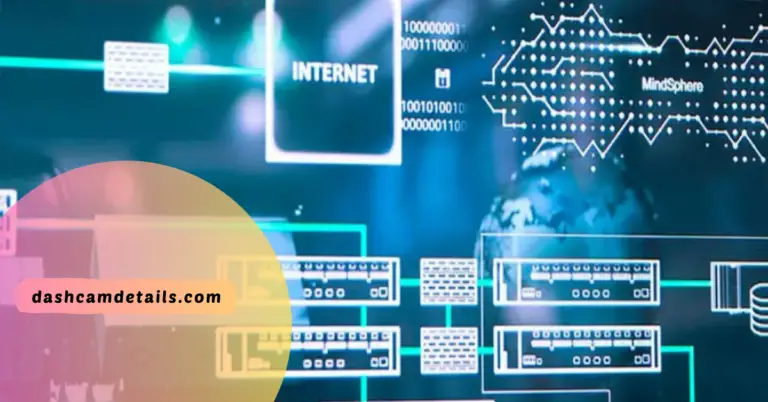Unraveling the Challenges of the Free Callisto Protocol: https://serversmu.com/blog/el-protocolo-callisto-gratis-tiene-problemas/
Callisto, a protocol designed to deliver advanced security solutions within the blockchain realm, stands as a beacon for enhancing user data privacy and protection.
Through the integration of smart contracts and encryption technologies, Callisto establishes a robust infrastructure catering to both cryptocurrency developers and users alike.
Understanding Callisto: An Overview:
Callisto, envisioned as a guardian of blockchain security, offers a unique feature set aimed at fortifying the integrity of user data and transactions.
With its primary focus on enhancing privacy and data protection, Callisto employs a combination of smart contracts and encryption techniques to create a secure environment within the blockchain ecosystem.
Enhancing Security with Callisto:
A standout feature of Callisto is its capability to conduct security audits on existing smart contracts. This proactive approach allows developers to assess the integrity and security of their contracts before deploying them onto the blockchain https://serversmu.com/blog/el-protocolo-callisto-gratis-tiene-problemas/.
By offering this additional layer of scrutiny, Callisto mitigates potential risks and reduces the likelihood of security breaches. Furthermore, Callisto provides tools for detecting and mitigating attacks, thereby offering users an added level of protection for their assets.
Challenges Faced by the Free Callisto Protocol:
Despite its promising features, the free Callisto protocol has encountered certain challenges that warrant attention. These challenges primarily revolve around issues such as scalability, interoperability, and governance.
Scalability Concerns:
As blockchain technology continues to evolve, scalability remains a pressing concern for protocols like Callisto. The increasing volume of transactions and the growing user base pose challenges in terms of network congestion and transaction processing times. Addressing these scalability issues is crucial for ensuring the efficient functioning of the Callisto protocol.
Interoperability Challenges:
Interoperability, or the ability of different blockchain networks to communicate and interact with each other seamlessly, is another area where the free Callisto protocol faces challenges.
Achieving interoperability is essential for enabling the seamless transfer of assets and data across different blockchain platforms. Overcoming these interoperability challenges will be vital for the widespread adoption of the Callisto protocol.
Governance Issues:
Effective governance is paramount for the sustainable development and growth of any blockchain protocol. In the case of the free Callisto protocol, ensuring transparent and democratic governance mechanisms is essential for fostering community trust and participation. Addressing governance issues will be crucial for maintaining the long-term viability of the Callisto protocol.
Security Risks and Vulnerabilities:
Despite its focus on security, the Callisto protocol is not immune to security risks and vulnerabilities. As with any technology, the presence of bugs, loopholes, and vulnerabilities can potentially compromise the security of the protocol.
Malicious actors may exploit these vulnerabilities to launch https://serversmu.com/blog/el-protocolo-callisto-gratis-tiene-problemas/ attacks or manipulate the system for their gain.
Therefore, continuous security auditing and vulnerability testing are essential to identify and mitigate potential threats to the Callisto protocol.
Community Adoption and Support:
The success of any blockchain protocol relies heavily on community adoption and support. Building a strong and engaged community around the Callisto protocol is crucial for its long-term success and sustainability.
However, garnering widespread adoption and support can be challenging, especially in a highly competitive and rapidly evolving industry.
Efforts to educate and incentivize users, developers, and stakeholders to participate in the Callisto ecosystem are essential for fostering community growth and engagement.
Regulatory Compliance:
Navigating the regulatory landscape is another significant challenge facing the Callisto protocol. The cryptocurrency and blockchain industry is subject to a complex and evolving regulatory environment, with regulations varying significantly across different jurisdictions.
Ensuring compliance with relevant laws and regulations, such as anti-money laundering (AML) and know your customer (KYC) requirements https://serversmu.com/blog/el-protocolo-callisto-gratis-tiene-problemas/, is essential for the legitimacy and credibility of the Callisto protocol.
Additionally, staying abreast of regulatory developments and adapting to changes in regulatory requirements poses ongoing challenges for the protocol’s development and operation.
Resource Constraints and Funding:
Sustaining the development and growth of the Callisto protocol requires adequate resources and funding. However, securing funding for blockchain projects can be challenging, particularly in a competitive funding landscape.
Moreover, allocating resources effectively and efficiently to support protocol development, marketing, and community engagement initiatives is essential for achieving the protocol’s goals.
Finding sustainable funding models, such as grants, partnerships, or token-based incentives, is crucial for ensuring the continued advancement and success of the Callisto protocol in the long run.
Technical Complexity and Education:
Another challenge facing the Callisto protocol is the technical complexity inherent in blockchain technology. Understanding and implementing blockchain solutions require specialized knowledge and skills, which may act as barriers to adoption for developers and users unfamiliar with the technology.
Therefore, investing in educational initiatives and resources to demystify blockchain technology and facilitate its adoption is crucial for expanding the user base of the Callisto protocol.
By providing comprehensive documentation, tutorials, and developer tools, the protocol can empower individuals and organizations to leverage its capabilities effectively.
Network Security and Resilience:
Maintaining network security and resilience is paramount for the stability and trustworthiness of the Callisto protocol. As blockchain networks become increasingly attractive targets for cyberattacks, ensuring robust security measures is essential for protecting against threats such as hacking, denial-of-service attacks, and network manipulation https://serversmu.com/blog/el-protocolo-callisto-gratis-tiene-problemas/.
Implementing robust encryption, consensus mechanisms, and network monitoring tools can enhance the security posture of the Callisto protocol and mitigate the risk of security breaches. Additionally, fostering a culture of security awareness and collaboration within the Callisto community can further bolster the network’s defenses against emerging threats.
User Experience and Interface Design:
The user experience (UX) and interface design play a crucial role in the adoption and usability of the Callisto protocol. A user-friendly and intuitive interface can significantly enhance the accessibility and appeal of the protocol to both novice and experienced users.
Therefore, investing in UX research and design to create an intuitive and seamless user experience is essential for driving adoption and engagement.
By prioritizing usability and accessibility in the design of its applications and interfaces, the Callisto protocol can lower entry barriers and attract a wider audience of users and developers.
Additionally, soliciting feedback from users and incorporating user-centered design principles can help refine the protocol’s interface and improve overall user satisfaction.
Conclusion:
In conclusion, while the free Callisto protocol holds immense potential for enhancing security within the cryptocurrency industry, it is not without its challenges.
Issues such as scalability, interoperability, and governance need to be addressed to ensure the continued success and adoption of the Callisto protocol.
By overcoming these challenges, Callisto can fulfill its mission of providing a secure and reliable infrastructure for blockchain developers and users alike.




